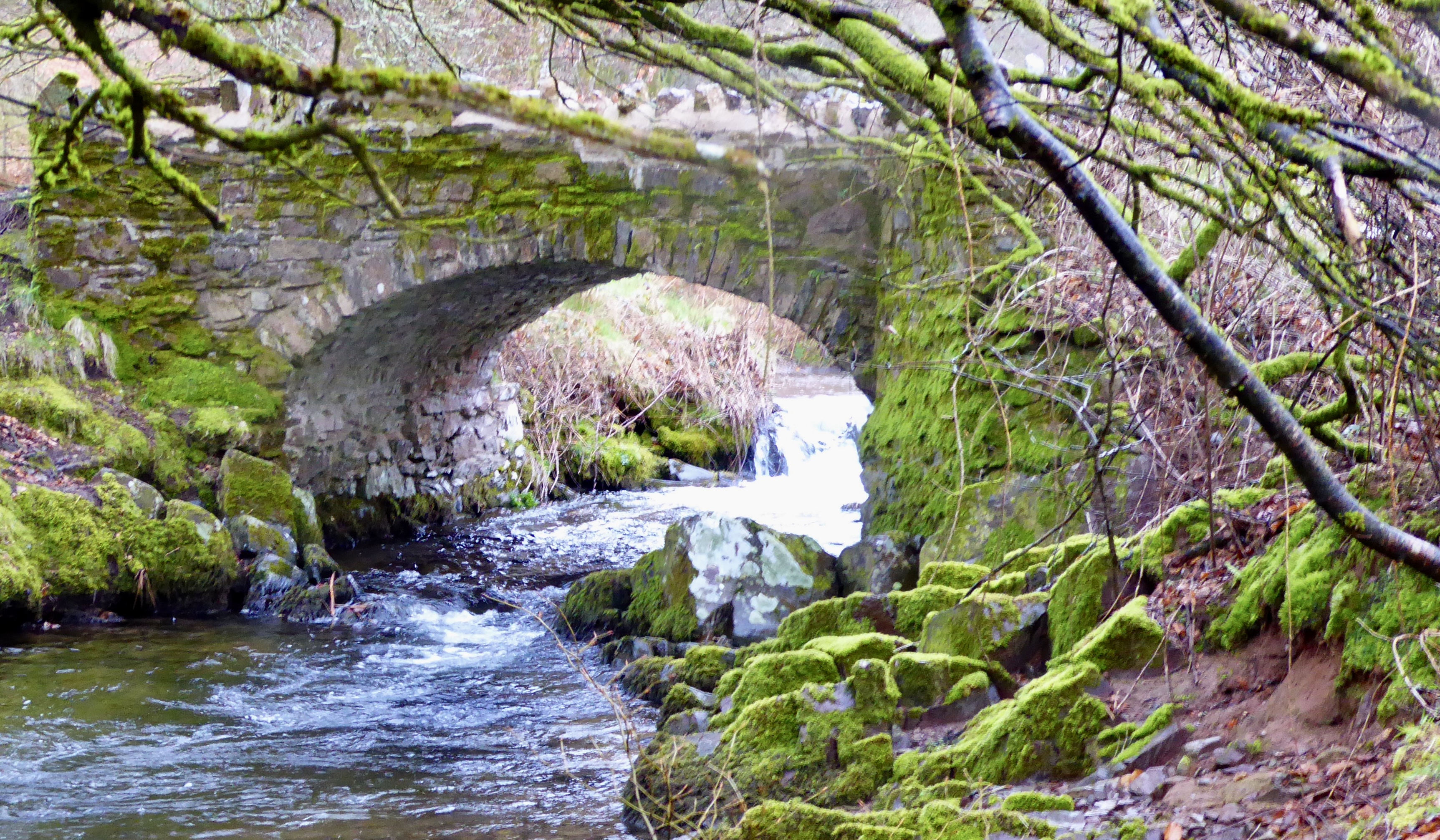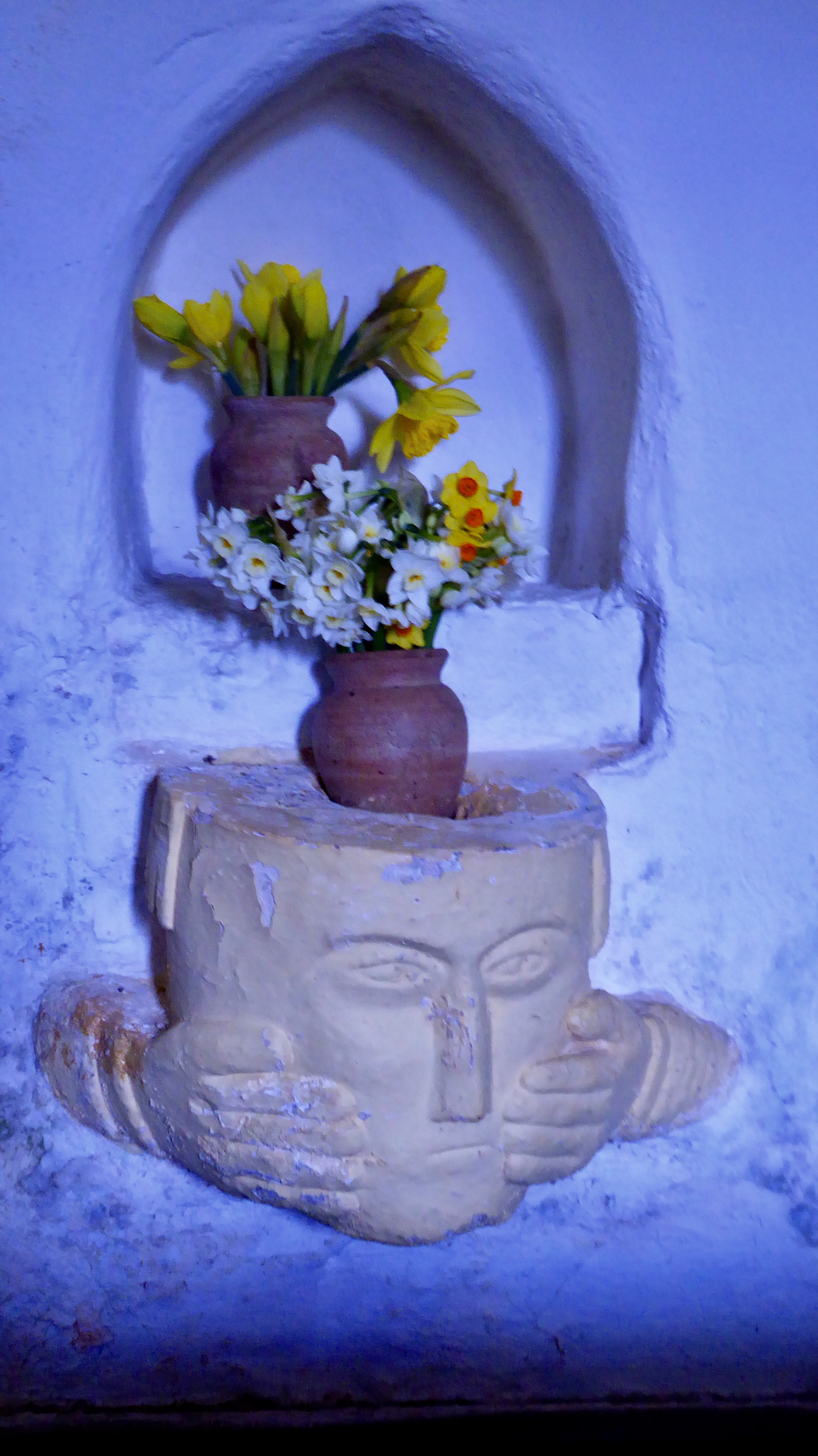
Oare Church
Oare Church is situated in an isolated, tranquil spot on Oare Water, a moorland stream on Exmoor. Perhaps most famous for its association with R D Blackmore's novel Lorna Doone, the church , however, existed for many centuries before this notoriety.

Located down a steep sided Exmoor valley which is clad in gorse and bracken alongside the babbling brook, it is easy to step back in time or even imagine time has stood still as you enter this ancient holy church. Perhaps not the most visited, and even overlooked by the dwindling resident population, we were profoundly moved by our time spent in this place.
There is no definite history linking the site to any Celtic Christian or even its existence at that time. However, one intriguing feature does act as a signpost that perhaps something existed during that time. Inset in the wall is an ancient piscina in the face of a head and it's been suggested this represents St Decumen who was a Celtic Christian most known for his association with Watchet, a bit further along the Somerset coast.

An article in Briton Express which covers St Decuman's Well at Watchet says the following:
'Decuman (d 706) was a Welsh missionary who arrived in Somerset from his home in Pembrokeshire, floating on a raft made by his cloak and accompanied by a cow. Decuman was a native of Rhoscrowther in Pembrokeshire and the son of noble parents. He wanted to escape from the worldliness of his homeland and floated across the Bristol Channel to become a hermit. Here he healed the sick and acted as a pastor to the inhabitants.
The name Decuman is unusual; it comes from the Latin for a farmer of tithes, that is, a smallholder who paid a tithe, or rent, for his farm. The name suggests that he or his family lived at the very end of the Roman administration of Britain. That hypothesis presents a problem, though, as the Romans left in the early 5th century, and Decuman is said to have died in the early 8th century. It is possible that the traditional date of Decuman's death is wrong; the date seems extremely late for a Celtic saint.
Most holy wells have interesting folk tales associated with them and St Decuman's is no exception. According to tradition, pagan robbers assaulted Decuman in his hermit cell and struck off his scalp. Decuman merely picked up his scalp, carried it to the well, washed it, placed it back on his head, and was instantly healed.
Another, more dramatic version of the story says that Decuman's entire head was lopped off, whereupon he carried it to the well, washed it in the healing waters, put it back on his shoulders, and carried on with life as normal.
Yet another version says that Decuman's attackers were not robbers but merely locals who did not want his Christian preaching. They attacked him in his cell but when they struck off his head, the spring gushed out of the ground where his head fell. This tale of holy water gushing out of the ground where a saint is killed is a common motif in hagiography.
The locals were so impressed by this miraculous feat that they came together and helped Decuman build a church near the holy well. That simple church was later rebuilt in stone and became the medieval building of today in Watchet.'
So it is highly possible that Decuman was known in the Oare area, as these Christians were often peregrinus (ones who pilgrimed and travelled to share the gospel).

The reason I mention this is because of the extraordinary presence of God in this church. It's an ancient presence, a holy presence, one which doesn't settle in a place without good reason, nor linger down the centuries even when in our present age the church is hardly used. My husband and I popped into the church to pray, as we often do but without expectations. What surprised us was the intense and swift desire we both had to worship, loudly, wholeheartedly, exuberantly. Worship of Jesus, was literally pulled from our hearts and spirits. We could do nothing but worship. We wanted to do nothing but worship God with our whole beings.
During this time went into a vision and could see a Celtic Christian plunging his staff into the ground and declaring this land was dedicated to Jesus Christ. He drew a large circle with his staff declaring the land was God's. This didn't surprise me as I've seen similar actions in visions at other sites. The sense which accompanied the vision was that this church is a sanctuary and will continue to be so in days ahead, a safe place of holiness. Suddenly in the vision I'm sitting on a high vantage rocky outcrop with Jesus to my left. He points to the horizon and I'm expecting to see storm clouds forming, as the days ahead seem to be looming with darkness. Instead and to my utter surprise this isn't what I see. I can see golden glory on the horizon beginning to roll in. The scripture Habbakuk 2:14 came immediately to mind:
'For the earth will be filled with the knowledge of the glory of the Lord as the waters cover the sea.'
Jesus spoke to me then, 'It's coming Kathy, but a little while more.'
My husband had a very similar sense accompanied by the scripture, '"Not by might, nor by power but by My Spirit", says the Lord.' Zechariah 4:6.
So Oare church left a lasting impact on both of us. It was surprising. It was unexpected and it was a holy encounter with the living God. I highly recommend a visit to seek God for yourselves.